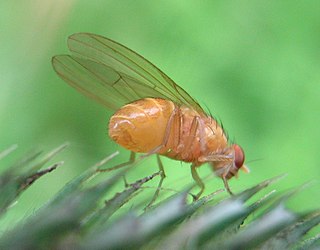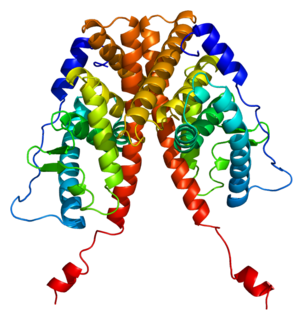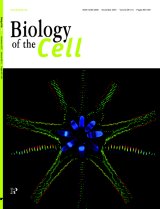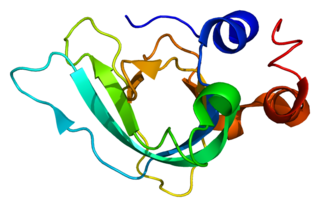
Biology – The natural science that studies life. Areas of focus include structure, function, growth, origin, evolution, distribution, and taxonomy.

A fibroblast is a type of biological cell that synthesizes the extracellular matrix and collagen, produces the structural framework (stroma) for animal tissues, and plays a critical role in wound healing. Fibroblasts are the most common cells of connective tissue in animals.

In biology, the extracellular matrix (ECM) is a three-dimensional network consisting of extracellular macromolecules and minerals, such as collagen, enzymes, glycoproteins and hydroxyapatite that provide structural and biochemical support to surrounding cells. Because multicellularity evolved independently in different multicellular lineages, the composition of ECM varies between multicellular structures; however, cell adhesion, cell-to-cell communication and differentiation are common functions of the ECM.
The following outline is provided as an overview of and topical guide to neuroscience:

Cell adhesion is the process by which cells interact and attach to neighbouring cells through specialised molecules of the cell surface. This process can occur either through direct contact between cell surfaces such as cell junctions or indirect interaction, where cells attach to surrounding extracellular matrix, a gel-like structure containing molecules released by cells into spaces between them. Cells adhesion occurs from the interactions between cell-adhesion molecules (CAMs), transmembrane proteins located on the cell surface. Cell adhesion links cells in different ways and can be involved in signal transduction for cells to detect and respond to changes in the surroundings. Other cellular processes regulated by cell adhesion include cell migration and tissue development in multicellular organisms. Alterations in cell adhesion can disrupt important cellular processes and lead to a variety of diseases, including cancer and arthritis. Cell adhesion is also essential for infectious organisms, such as bacteria or viruses, to cause diseases.
Israel Hanukoglu is a Turkish-born Israeli scientist. He is a full professor of biochemistry and molecular biology at Ariel University and former science and technology adviser to the prime minister of Israel (1996–1999). He is founder of Israel Science and Technology Directory.
The prolactin receptor (PRLR) is a type I cytokine receptor encoded in humans by the PRLR gene on chromosome 5p13-14. It is the receptor for prolactin (PRL). The PRLR can also bind to and be activated by growth hormone (GH) and human placental lactogen (hPL). The PRLR is expressed in the mammary glands, pituitary gland, and other tissues. It plays an important role in lobuloalveolar development of the mammary glands during pregnancy and in lactation.

Estrogen receptor alpha (ERα), also known as NR3A1, is one of two main types of estrogen receptor, a nuclear receptor that is activated by the sex hormone estrogen. In humans, ERα is encoded by the gene ESR1.

The Max Planck Institute of Experimental Medicine was a research institute of the Max Planck Society, located in Göttingen, Germany. On January 1, 2022, the institute merged with the Max Planck Institute for Biophysical Chemistry in Göttingen to form the Max Planck Institute for Multidisciplinary Sciences.

Biology of the Cell is a peer-reviewed scientific journal in the field of cell biology, cell physiology, and molecular biology of animal and plant cells, microorganisms and protists. Topics covered include development, neurobiology, and immunology, as well as theoretical or biophysical modelling.

TIMP metallopeptidase inhibitor 1, also known as TIMP1, a tissue inhibitor of metalloproteinases, is a glycoprotein with a molecular weight of 28 kDa. TIMP1 is expressed from several tissues of organisms.

GeroScience is a scientific journal focused on the biology of aging and on mechanistic studies using clinically relevant models of aging and chronic age-related diseases. The journal also publishes articles on health-related aspects of human aging, including biomarkers of aging, multisystem physiology of aging and pathophysiology of age-related diseases.

Human Reproduction is a peer-reviewed scientific journal covering all aspects of human reproduction, including reproductive physiology and pathology, endocrinology, andrology, gonad function, gametogenesis, fertilization, embryo development, implantation, pregnancy, genetics, preimplantation genetic diagnosis, oncology, infectious disease, surgery, contraception, infertility treatment, psychology, ethics, and social issues. It is an official journal of the European Society of Human Reproduction and Embryology. It was established in 1986 with Robert Edwards as founding editor-in-chief.

Journal of Biological Rhythms is a peer-reviewed academic journal that publishes papers focused on chronobiology, or any aspect of biological rhythms with a special emphasis on seasonal and circadian rhythms. However, papers on various other rhythms are also published in the Journal of Biological Rhythms. These publications can be primary reports of new discoveries, reviews, commentaries, or letters. As such, the authors of the publications have a diverse set of backgrounds and base their findings in areas like ecology, neurobiology and behavior, psychology and psychiatry, endocrinology, developmental biology, pharmacology, cell biology, biochemistry, genetics, molecular biology, and mathematical modeling. The Journal of Biological Rhythms has been in publication since 1986 and is currently published by SAGE Publications. The Journal of Biological Rhythms is the official publication of the Society for Research on Biological Rhythms. The journal's Chief Editor is William J Schwartz.

Günther K.H. Zupanc (born 20 October 1958) is a neurobiologist, researcher, university teacher, book author, journal editor, and educational reformer. He is Professor in the Department of Biology at Northeastern University in Boston, Massachusetts.
Membrane progesterone receptors (mPRs) are a group of cell surface receptors and membrane steroid receptors belonging to the progestin and adipoQ receptor (PAQR) family which bind the endogenous progestogen and neurosteroid progesterone, as well as the neurosteroid allopregnanolone. Unlike the progesterone receptor (PR), a nuclear receptor which mediates its effects via genomic mechanisms, mPRs are cell surface receptors which rapidly alter cell signaling via modulation of intracellular signaling cascades. The mPRs mediate important physiological functions in male and female reproductive tracts, liver, neuroendocrine tissues, and the immune system as well as in breast and ovarian cancer.

Jacques Balthazart is a Belgian biologist who specializes in behavioral neuroendocrinology, author of multiple publications and working at the University of Liège.
Chinmoy Sankar Dey is an Indian molecular biologist and a professor at Kusuma School of Biological Sciences of the Indian Institute of Technology, Delhi. Known for his research on insulin resistance, Dey's is a J. C. Bose National Fellow of the Department of Science and Technology and an elected fellow of the National Academy of Sciences, India and the Indian National Science Academy. The Council of Scientific and Industrial Research, the apex agency of the Government of India for scientific research, awarded him the Shanti Swarup Bhatnagar Prize for Science and Technology, one of the highest Indian science awards for his contributions to Medical Sciences in 2003. He is also a recipient of the National Bioscience Award for Career Development of the Department of Biotechnology.

The Archives of Biological Sciences is a multidisciplinary journal that covers original research in a wide range of subjects in life science, including biology, ecology, human biology and biomedical research.
Andrea C. Gore is a neuroendocrinology professor at the University of Texas at Austin in the Division of Toxicology and Pharmacology, where she holds the Vacek Chair of Pharmacology. She is a prominent contributor to the field of reproductive endocrinology. Her research interests span from the neurological basis of reproductive aging to endocrine disruptors in the nervous system. From January 2013 through December 2017, she was Editor-in-Chief of the journal Endocrinology. She has also been elected into the Fellow to the American Association for the Advancement of Science.














